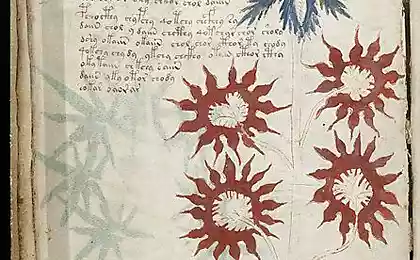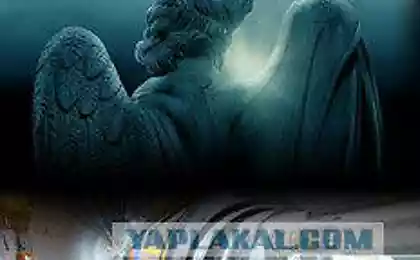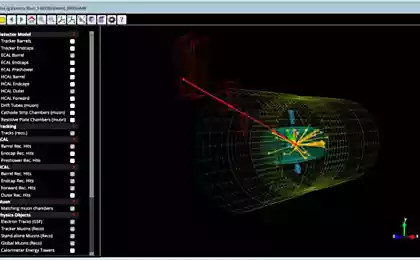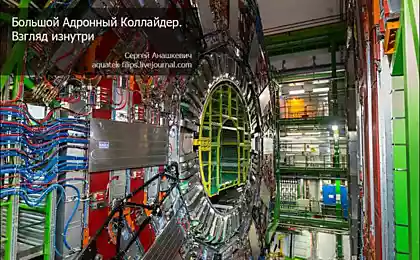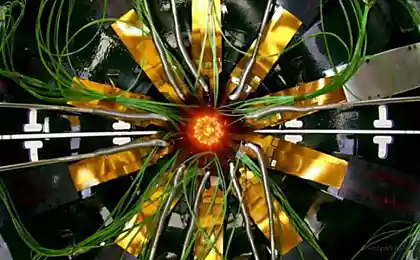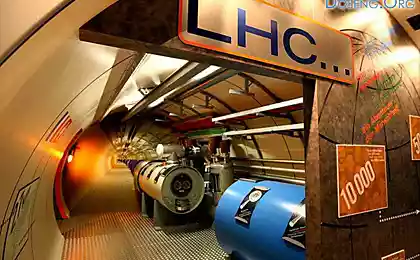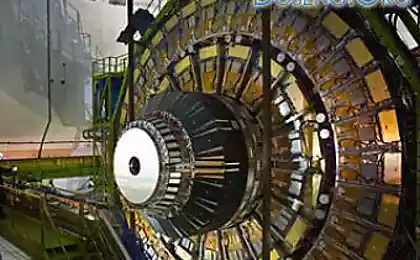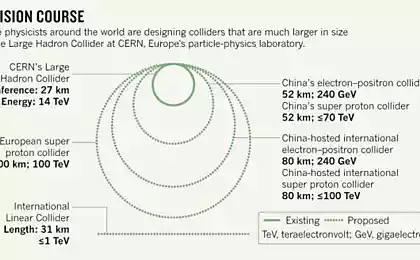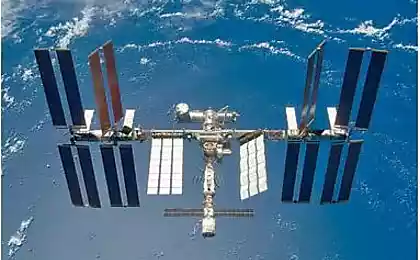1822
CERN collider eyes of a tourist
90,221,935
Recently came the publication of our book for children "Simple Science", about which I have already told earlier. A few weeks later comes the second, then - the third and fourth. All of them are represented by simple experiments for children 5-12 years. But now I'm thinking about a more adult audience - schoolchildren middle and high school. Of course, the experiences of the released books they too can prodelyvat but boyish will have an effect, and we will get in return, "What is this child's experience ?! Where serious stuff ?! Where experiments with elementary particle radiation, the speed of light, DNA, liquid nitrogen, and so on? Where are the instructions "how to make a pocket Collider"? »
And, damn it, they're right! I have not found a single book in the sale, where there were "serious" experiments that can be repeated at the same time and on their own at home. We must fill this gap, begin to search the material and its structuring. And, of course, first of all, I went to CERN .... I understand that my approach may seem crazy to many, but to me it seems reasonable and logical :) After all, to do something interesting, you must first immerse themselves in this "interesting" to the head and, to understand, to try to convey their impressions to others. < / a>
CERN h4>
Reception h4>
«Globe» h4>
Gastronomy h4>
Administrative body h4>
Bicycles h4>
Open Air Museum h4>
SM18 h4>
The detector CMS h4>
Books for children "Simple Science» h4>
Recently came the publication of our book for children "Simple Science", about which I have already told earlier. A few weeks later comes the second, then - the third and fourth. All of them are represented by simple experiments for children 5-12 years. But now I'm thinking about a more adult audience - schoolchildren middle and high school. Of course, the experiences of the released books they too can prodelyvat but boyish will have an effect, and we will get in return, "What is this child's experience ?! Where serious stuff ?! Where experiments with elementary particle radiation, the speed of light, DNA, liquid nitrogen, and so on? Where are the instructions "how to make a pocket Collider"? »
And, damn it, they're right! I have not found a single book in the sale, where there were "serious" experiments that can be repeated at the same time and on their own at home. We must fill this gap, begin to search the material and its structuring. And, of course, first of all, I went to CERN .... I understand that my approach may seem crazy to many, but to me it seems reasonable and logical :) After all, to do something interesting, you must first immerse themselves in this "interesting" to the head and, to understand, to try to convey their impressions to others. < / a>
CERN h4>
But first a little bit about CERN, which Wikipedia describes as the European Center for Nuclear Research. The title contains the word "nuclear" and here it can confuse the viewer and take him away in the direction of nuclear power stations or, worse, nuclear bombs. No bombs and even a hint of them I have not seen. But one could argue they hide them and plotting terrible. Maybe. But I have another argument: if they are so insidious villains, you have to be very secretive and secret organization. In fact, I only saw the positive face of employees, full transparency in the accounts of their research and a willingness to cooperate. Yes, and the fact that I got there and within two days studied the one object, the other, speaks in favor of my argument.
And I began my study of CERN with a simple correspondence. The first letter sent to Anatoly October 2 received a response fairly quickly, but the standard - "We consider such a possibility." After a few letters, a copy was Marina Savino, which is an office for relations with the countries non-members of the CERN (that's such an interesting position). She speaks in Russian and, as I found out later, had lived in Moscow. After three weeks, we have determined the route, date and time of the visit, discussed the number of visitors on our part, we exchanged contacts and so on. All about everything it took 27 emails. But it was worth it!
Coincidentally, I had planned a trip to Austria just at this time and I had to go by car. And when you Journeying 2000 km., Why not slip even 600? So I got to the CERN January 7, 2014.
In today's story, I did not touch on anything scientific, and technical personal. Such a lot of information to interesting sites . I wanted simply to describe a visit to CERN through the eyes of a tourist.
Reception h4>
I first came to the parking lot with a barrier, which itself opened just 10 seconds. It turns out that he is not automatically opened, there is a camera, a security guard looks at the number of cars and passes. Drive can be anyone, but only once. The next day, most likely, the barrier is raised. Well, then tell me so.
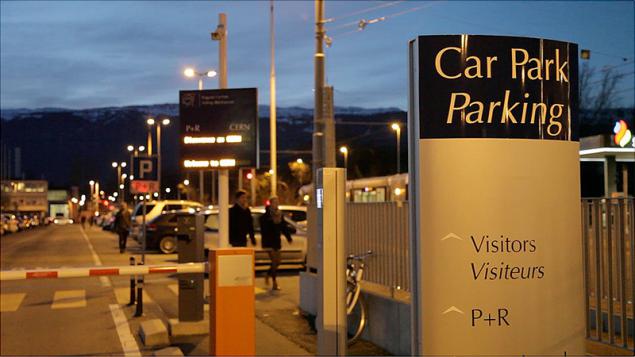
He went to the reception, where the specified time I was waiting for Marina.
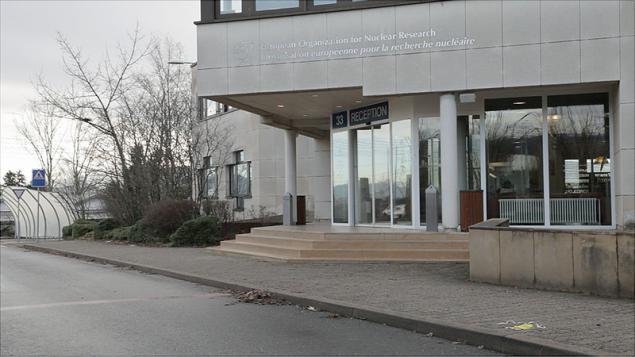
I must say that all the tours at CERN conducted in English or French. And I'm neither one nor the other did not really know. And then a gift - the Russian people. She announced plans to tour our voyage and we immediately started to work.
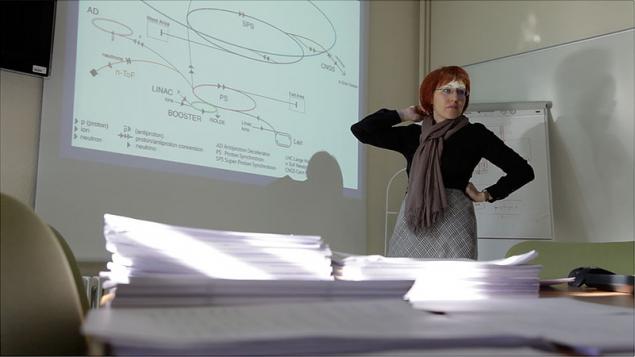
A tour began with a brief lecture about CERN and the Large Hadron Collider to view the video. I must say that Marina - a skilled storyteller. I forgot to say that I came back not one, but with the family. It turned out that with me for various reasons, refused to go to all to whom I offered. I tried to understand those people who have given such an opportunity to visit the heart of the world of experimental science, but could not. And my colleagues on the trip proved to be a wife and a son. So, the story of Marina made such an impression on his wife, that she changed her skepticism in the wild interest and the next six hours instead of me floated from one object to another. Son of shy at first, and was clearly not at ease, but when we went down to the detector, it all vanished.
«Globe» h4>
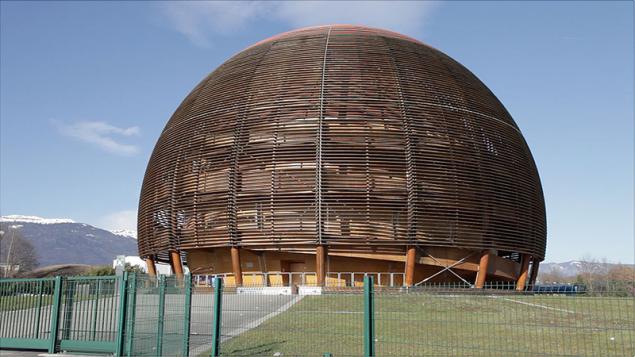
After the lecture, we went to the Globe. It is a round building that is often shown on TV, when they talk about CERN. The building is from a rusty contraption looks, but in case it is made of wood. And in the evening she still cool off.
On the ground floor is the CERN museum, where I met a couple of interesting exhibits: the first particle accelerator that can fit in your pocket.
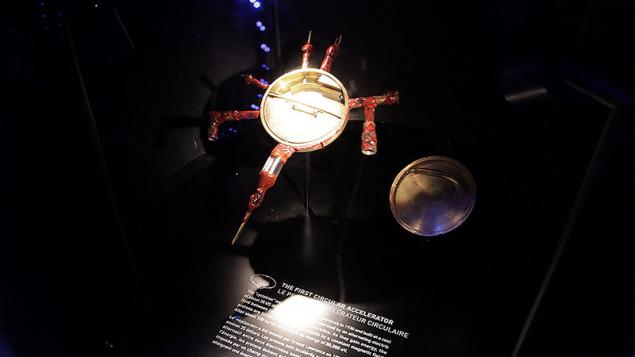
And three sheets of paper with the first article of Peter Higgs (Nobel laureate 2013), in which he sets out his idea, is now open, "Higgs boson". But in general it is habitual in the style of all the museums of science and technology.
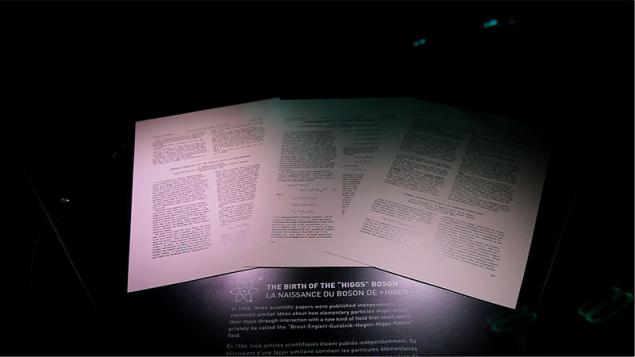
What is at the top of the "Globe" I forgot to ask.
Gastronomy h4>
Since the museum we were not so long, we have the opportunity to visit a local dining room and eat. It is a place where dinner only employees, and access to it is closed from the outside. However, there is still very crowded, but positively and delicious. And yet, it seemed to me, is not cheap. Generally, in Switzerland more expensive than, say, Germany or Austria. Lunch cost me 800r. But most of all, they have there some special offers, which I did not know. And another oddity - it does not accept the card. Cash only.
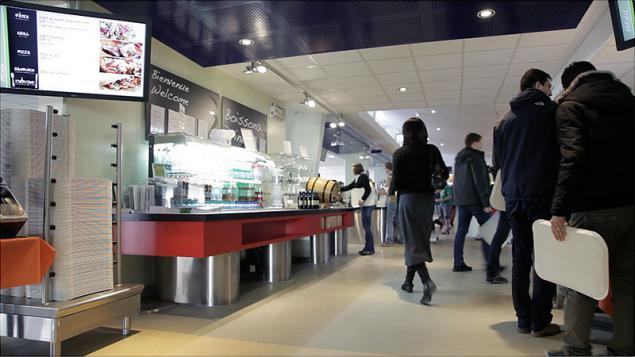

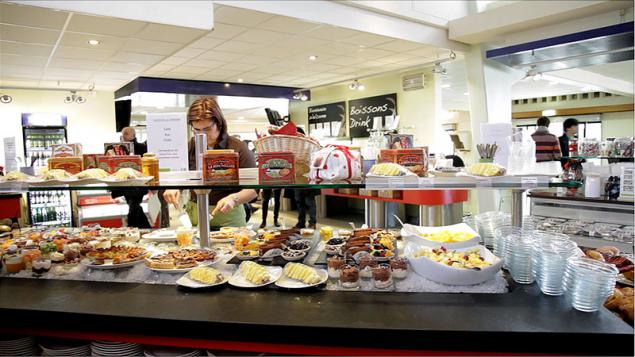
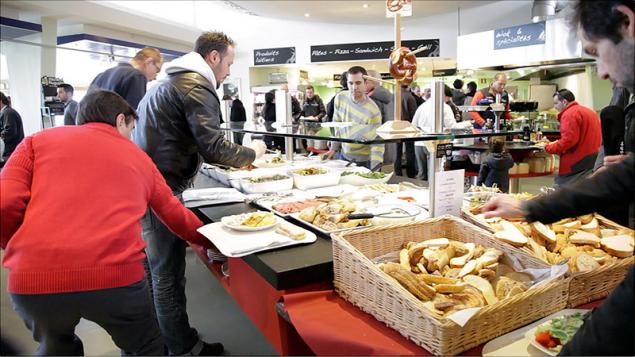
Administrative body h4>
After dinner walked through the corridors of several buildings. At the same time, it would go from one building to another, you have to go through a third and it is on the second floor of his. A piece of cake to get lost there.
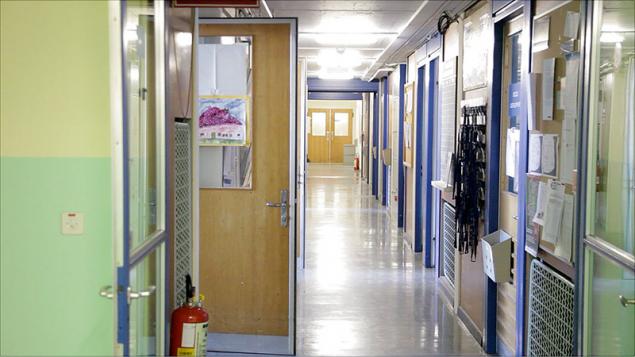
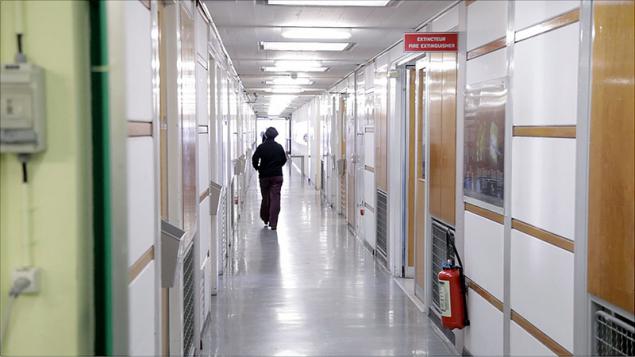
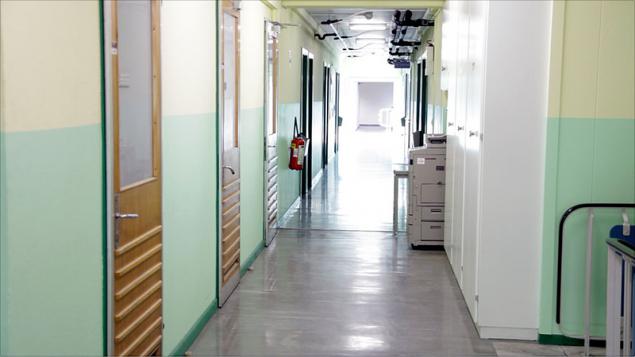
We looked into the auditorium. Marina said that earlier it was hanging board and acting on it there is something to draw. And when it was replaced with a projector screen, it was a scandal. Conservative people, these theoretical physicists.
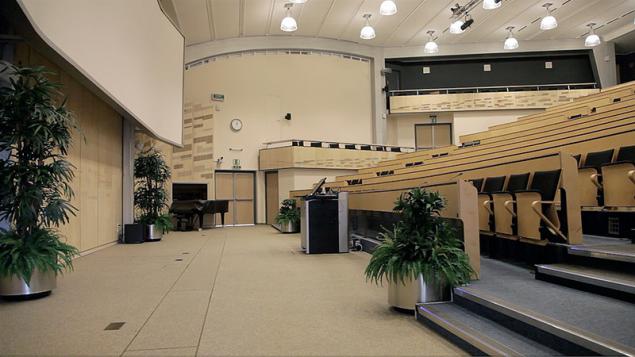
They've got even a post office.
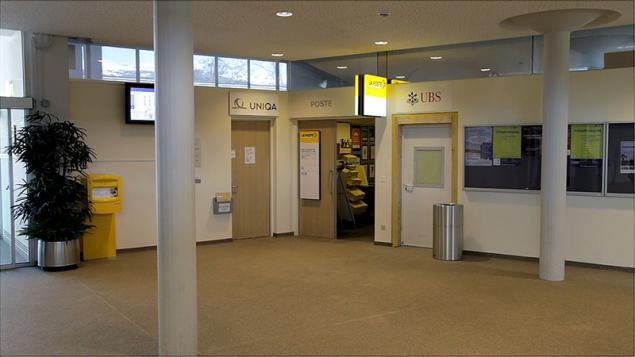
Bicycles h4>
Since inside the LHC tunnel ride only on compact equipment, you can often find photos of where the employee moves along the accelerator on a bicycle. Inside the tunnel we were not allowed, but I've seen a lot of bikes in the territory where:

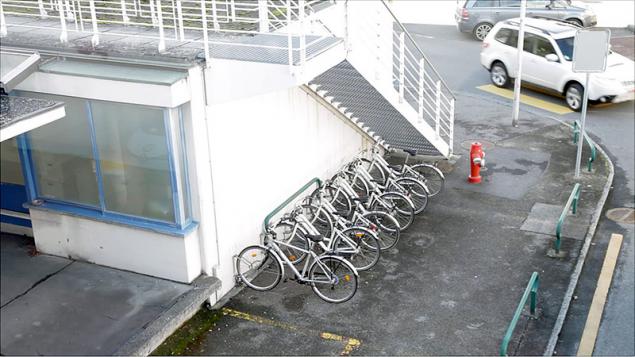
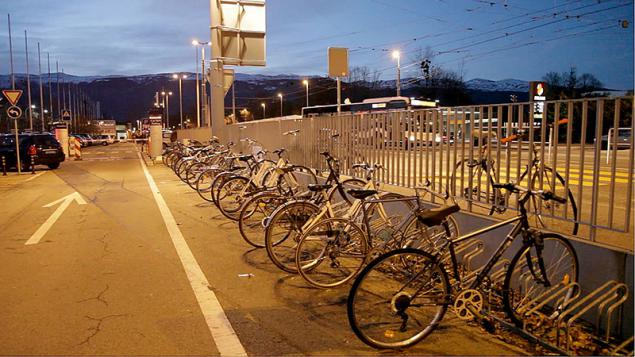
Open Air Museum h4>
In the courtyard there is a small lawn where they pulled the old artifacts on display (previously existing).
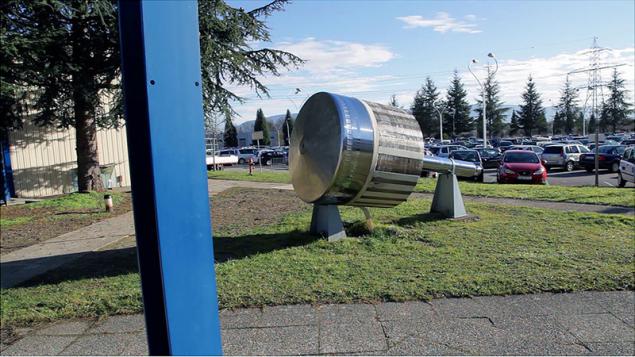
A miniature streets bear the names of various scientists.
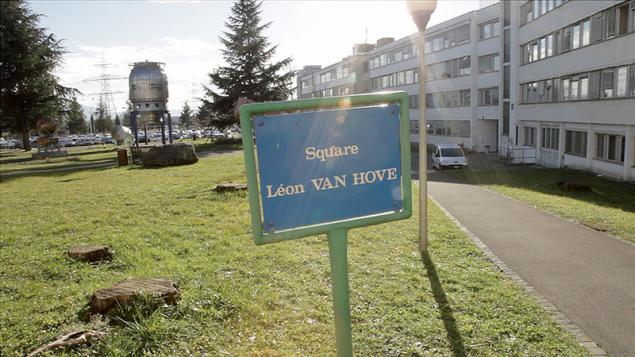
SM18 h4>
The place where we all watched in Switzerland, right on the border with France. And if you want to show some objects on the way of the tunnel LHC, they put people on a bus and driven to France. Fortunately there is one Schengen area. And our next item was already following in France, 3 km from the building "Globe". We drove back to our car. It was a place where all the tested superconducting magnets that make up protons manage to disperse these energies. In fact, it is such a large hangar or workshop titled «SM18». There are many interesting things! I'll show some pictures from there.
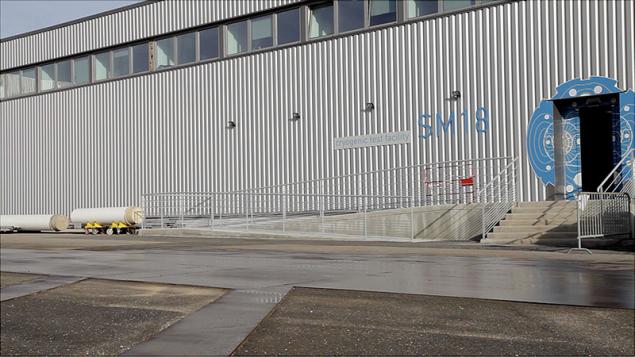
Place test and "training" the magnets at low temperatures:

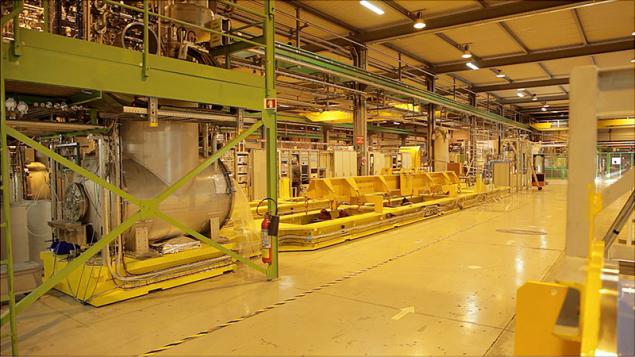
This piece of the exhaust section of the accelerator:
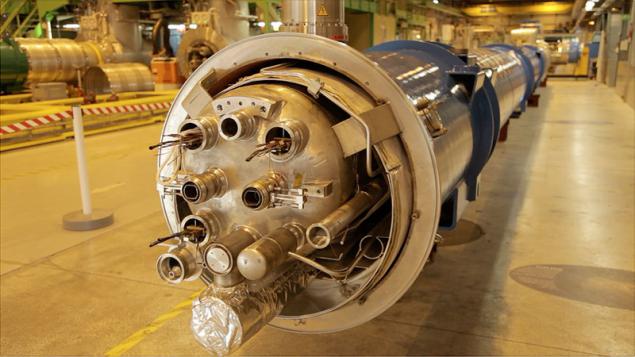
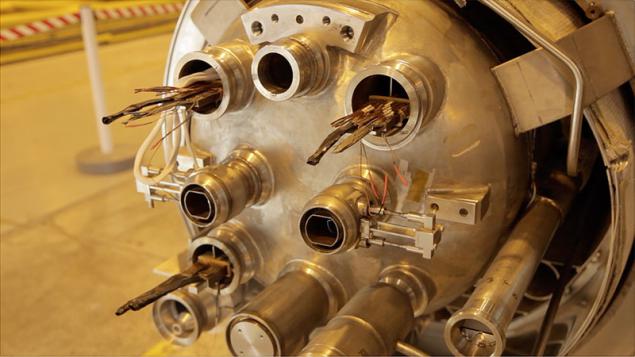
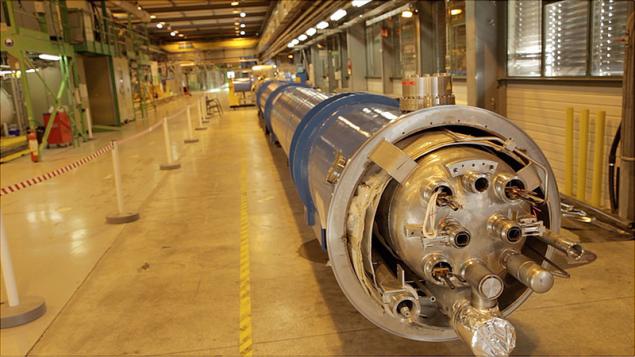
A is a place which is designed to compensate for contraction of the materials on cooling and stretching under heating. In other words - compensator:
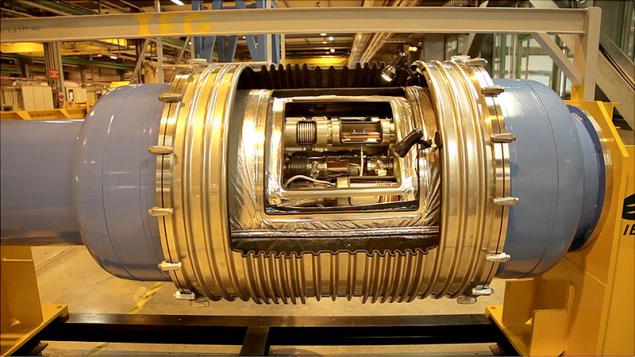
And it is the place of the superconductors. In one such place once it was "a problem" and there was a well-known failure, a few years ago, in which the accelerator stood a lot of time repairing:
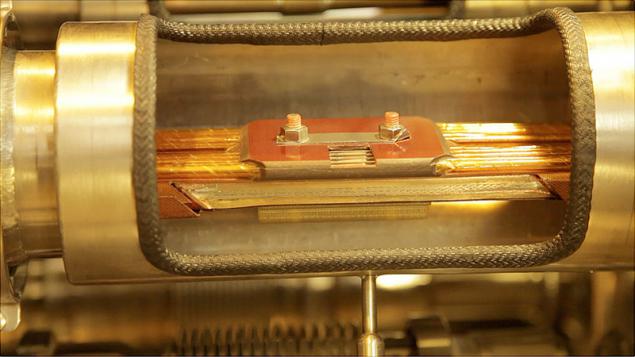
So look for yourself superconductors background copper conductors, which are equivalent to the current transmission capabilities for:
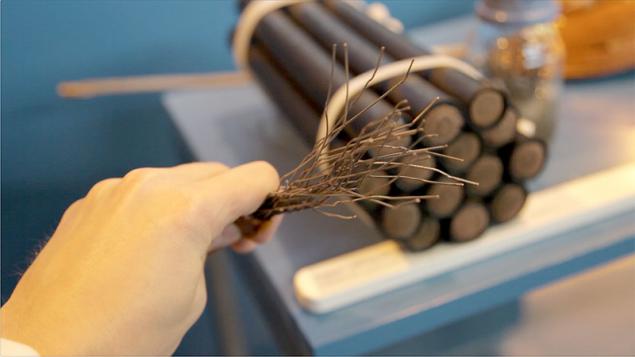

The detector CMS h4>
And finally, we went to look at the most interesting place for me - particle detector. There are four things on the way of accelerated particles, we were brought to the CMS. There are Atlas and some other.
In place of the three of us we have handed over into the hands of Alexander, a member of CERN. He, too, turned out to be Russian, and knew all about the Collider.
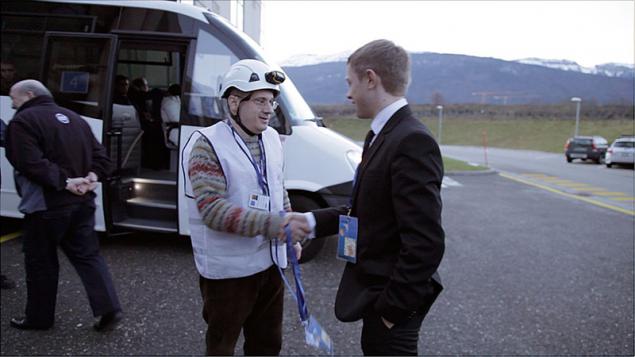
And so it began. First we passed the place from which monitor the work of the detector:
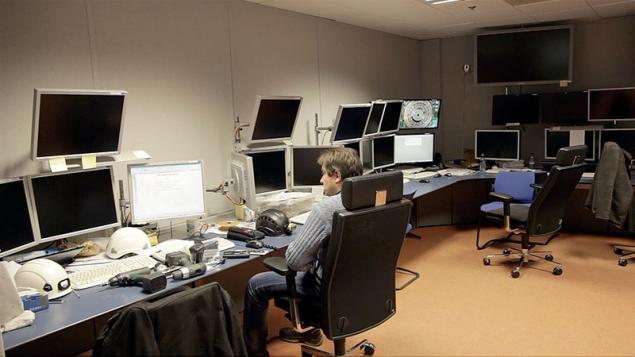
But these guys are talking very loudly in Russian, and is clearly not about protons :)
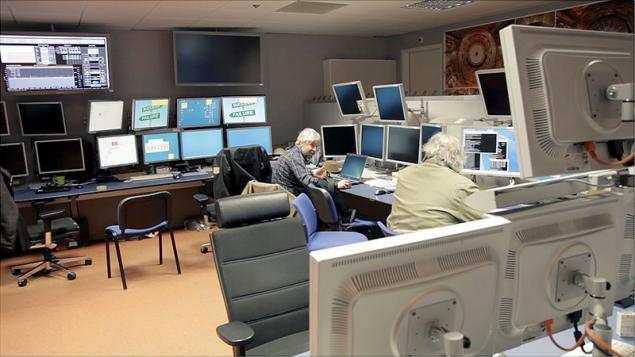
Then there was a lift and down a lot of floors:
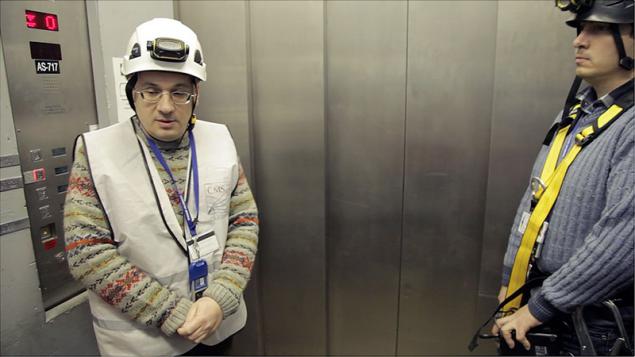
Here are a few pictures along the way:
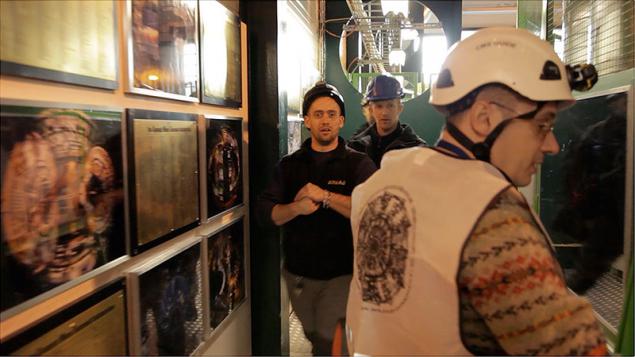
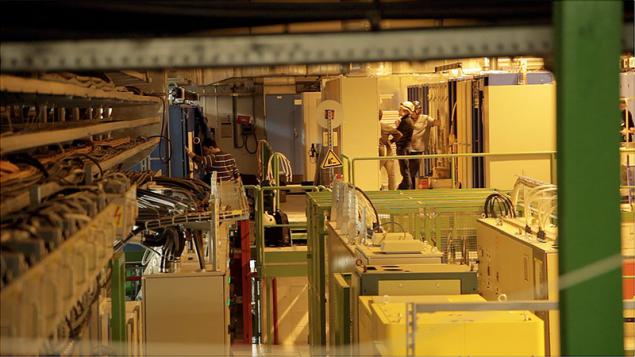
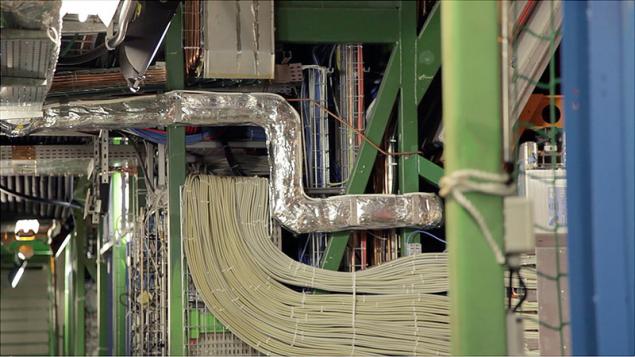
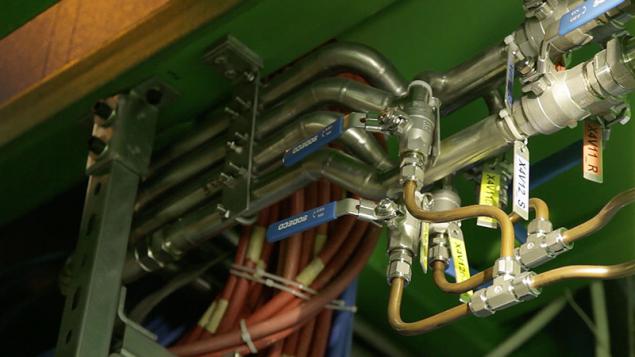
Well, in the end, we're almost there. It remains to overcome the main door to access classified. By the way, Alexander said that right here shot a couple of shots for the film "Angels and Demons." Confirm or deny can not - I have not watched the movie.

Then the corridor:
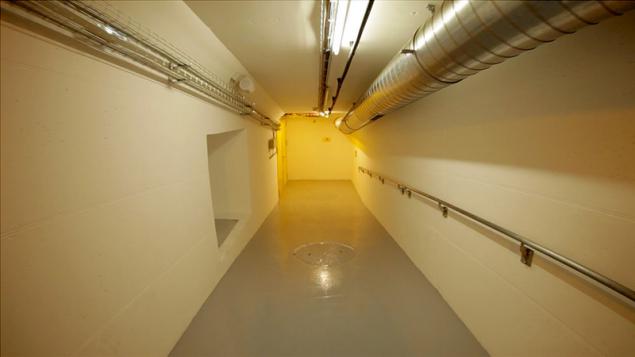
And, voila! Detector:
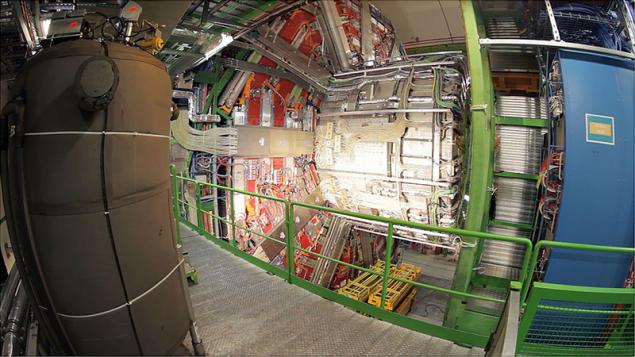
Frankly, I'm a little disappointed. After all, I wanted to see it:
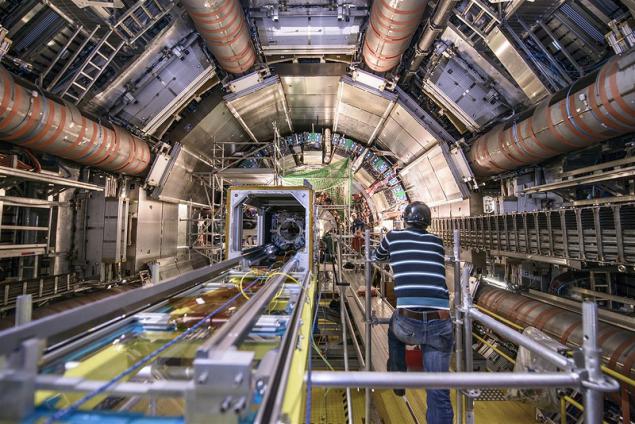
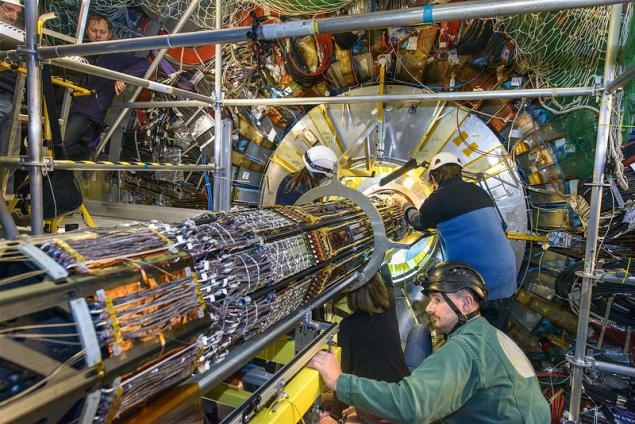
I have not said about one important thing. The detector can only be accessed when the accelerator is stopped. Sometimes it is not often. Can be turned off in a week for a few hours or a day a month to carry out any repairs or diagnostics. But even then, there have only access to the staff serving the detector. For onlookers, like me, always access all closed.
But now the accelerator stopped for scheduled maintenance and upgrade, and it lasts for a year and as many runs. It is in these "wonderful" moments to let the suffering. Clearly the case that allowed only a small piece to watch. And I'm just not very lucky, because just a month ago (according to our guide) ring detector were shifted elsewhere and opened a review on a much more interesting gizmos.
But this I was eventually glad:
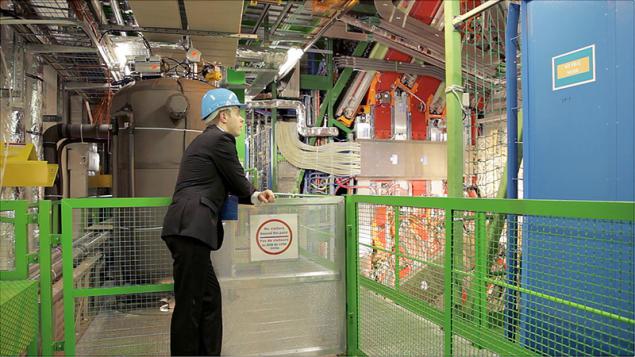
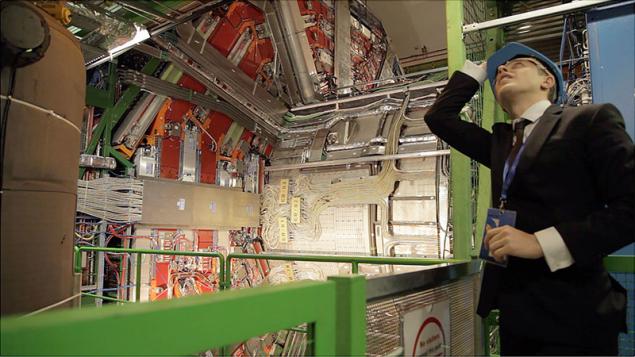
By that time, the street was dark and we were tired (but happy!) Went back to Switzerland.
Soon we will translate and voiced a clear and useful animation, I took it and put in the next post about CERN. Next, try to make a series of simple and funny clips with explanations "on the fingers", which will tell about the principle of operation of the accelerator, detectors and some more interesting things in the tank. And, perhaps, take off a couple of experiments for children on the theme of elementary particles. These are the plans for the January-February.
Books for children "Simple Science» h4>
And finally, I want to again ask all those who have an idea or a real opportunity to promote our books, to share our views on this matter. Any information will be useful to us. Here
Source:
Panorama of the Moon from "Changyi 3" and the failure of the main color camera lander
Bird stole the camera and conducted aerial photography penguin colony















































